-

Nightmare in the Backyard
$8.99 Add to cart -

Brothersong
$29.99 Add to cart -

Den 2: Muvovum
$34.99 Add to cart -

Sugar on the Bones
$29.00 Add to cart -

Kommix
$24.99 Add to cart -
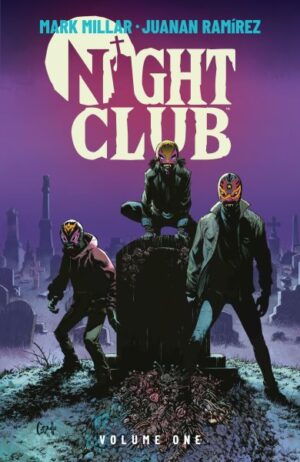
Night Club Volume 1
$19.99 Add to cart -

Saturation Point
$29.99 Add to cart -

Navigational Entanglements
$20.99 Add to cart -

Looking Glass Sound
$19.99 Add to cart -

Medusa’s Sisters
$19.00 Add to cart -
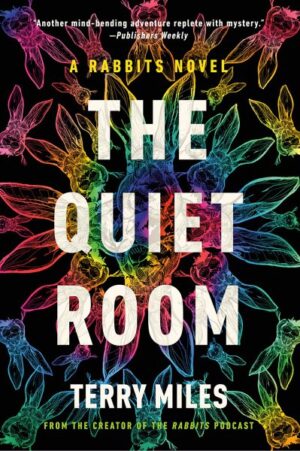
The Quiet Room
$18.00 Add to cart -

Shadowland
$14.99 Add to cart -
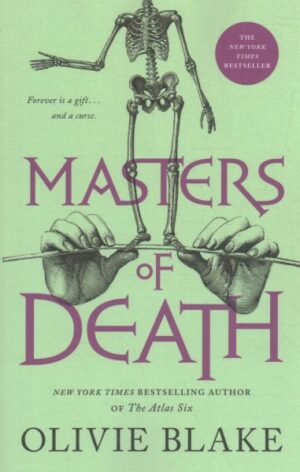
Masters of Death
$19.99 Add to cart -

Alley
$25.00 Add to cart -

The Dissonance
$29.00 Add to cart -

Acceptance
$18.00 Add to cart -

Authority
$18.00 Add to cart -

Annihilation
$18.00 Add to cart -

Snuff
$17.99 Add to cart -

The Fifth Elephant
$17.99 Add to cart
Two Graphic Novels for Grown-ups
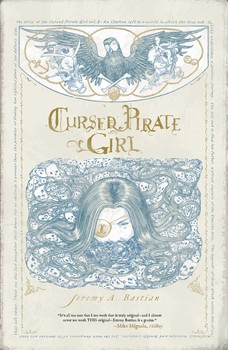
Cursed Pirate Girl by Jeremy A. Bastian
This graphic novel stars a one-eyed young woman who has adventures while searching for her lost father, a not uncommon kid plot. The cover copy says that the story will “captivate adults and children alike.” It does indeed have a young protagonist and contains nothing objectionable for kids. But it is a complicated story, with lots of big words and deep meaning hidden in intricate drawings. Also, the author did his own lettering, in a lovely cursive script that only an advanced reader will be able to parse easily. It probably needs at least adult supervision.
The book is filled with interesting and unexpected characters. There is adventure. There are many varieties of pirates. There is a girl swashbuckling hero. The backgrounds, studied carefully, reveal all sorts of extra seafaring weirdness. The overall effect is a sort of nautical Alice in Wonderland, mixed with the zany pirate craziness of One Piece. It is incredibly inventive, seriously silly, a bit scary, and tons of fun.
Octopus by Richard Fairgray
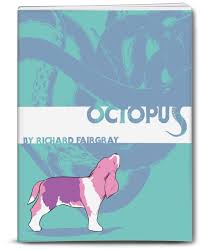
This one is definitely not for kids. Though there is very little graphic sex, there is mention of multiple sexual relationships, past and present, woven through every page of the story. The book is a memoir of the author’s relationships with older men, looking back on the “messy and uncomfortable memories” of decades. It is a series of stories of encounters with aging men who once might have been the author’s lovers, but who always meant more than that to him.
Richard Fairgray promises to “make your bookshelf gayer, but not necessarily nicer.” Octopus is not the kind of gay memoir where awakening leads eventually to self-acceptance. It is gritty and raw, and full of angst and a fair amount of self loathing. It has the brutally honest sexuality of Robert Crumb and the introspective storytelling in graphic form of Will Eisner. But, well, lots gayer.
The stories look back with regret on relationships of caring that were lost partly because they were overlaid with relationships of need. And yet there is a haunting beauty to the stories. There is a sense of time wasted on unimportant things. It is a memoir written by a gay man who has learned that sex is a need that sometimes can be fulfilled by a friend, but that, ultimately, the friendship is much more important.
Three Graphic Novels for Kids
We’re just back from Heroes Con, a huge comic convention in North Carolina, where hundreds of comic and graphic novel writers and artists display their talents. These three caught our attention as appropriate for kids, and also well-written and fun.

Spider-Man: Animals Assemble by Mike Maihack
This is the first book in a graphic novel series called A Mighty Marvel Team-Up, featuring a childlike Spiderman and cameos by many other Marvel superheroes. The third book will be out soon. It is for readers of “all ages.” It has a wonderfully silly, kid-friendly plot that puts cooperation and neighborliness above fighting. All of the superheroes in the story are exuberantly friendly and helpful. And cute. There is an adorable pigeon companion. Remember: “With great power comes . . . an ability to do AWESOME flips.”
Cleopatra in Space by Mike Maihack
This series began in 2014 and is now up to six books. It was selected as a “YALSA Quick Pick for Reluctant Young Adult Readers.” Cleopatra is a fifteen-year-old who is bored by her private schooling, and feels trapped by her life as the next Queen of Egypt. Her intelligence and skills are revealed by the inventiveness of the trouble she gets into. On one of her extra-curricular adventures, she is wafted to the far future, where she is expected, possibly, to save the galaxy someday. But first . . . she has to attend school. Fortunately, preliminary galaxy-saving adventures are sometimes available, and accompanied by a grumpy but adorable talking cat.

Cosmic Cadets: Contact by Ben Crane and Mimi Alves
This is a middle-grade, independent graphic novel, full of friendship and understanding, along with space adventure and a surprisingly tense plot. The kids of a very diverse intergalactic exploration crew go on their own planet-side adventure and discover friendly aliens. Each of the kids’ individual strengths contribute to a successful first contact. Meanwhile, the adults prepare for a war against the new alien species, in order to rescue their kids. Will the kids be able to clear up the misunderstanding in time? The story is very well written, with a cast of characters, both kids and adults, who break out of stereotypes and are relatable and unique. The authors are working on their next adventure.
I’m Afraid You’ve Got Dragons by Peter S. Beagle
Peter S. Beagle is a Grand Master—his 2018 world fantasy award proves it—with numerous other awards and achievements. He has not written very much, overall, but he is best known for The Last Unicorn, which he wrote in 1968 and has never been out of print. I remain fondest of his even earlier book about love after death, A Fine and Private Place. This newest book has decades of praise for Beagle’s long writing career on its cover, from multiple other Grand Masters.

I’m Afraid You’ve Got Dragons is a comfortable read, written with Beagle’s spare, elegant prose, which says only what needs to be said, no more or less. Its young protagonists are quirky and adorable, all convinced of their proper place in a medieval society. They are mostly wrong. But they don’t really need to overturn societal expectations or reinvent tradition. They merely need to learn who they truly want to be.
Robert is a young man who loves dragons which, since his job is to exterminate them like the rats they are, is not a particularly worthwhile trait. Beautiful Princess Cerise expects to someday marry a prince, but she’s not in any hurry about it and is meanwhile secretly teaching herself to read. Crown Prince Reginald looks like a prince, but is not very good at being one, and doesn’t like it very much. They all find adventure, whether they want to or not, and grow along the way.
No new ground is broken in the novel, not really. The only idea I haven’t seen before is the premise that dragons come in all sizes and most are merely nuisances, living in the walls of castles like rats. But there are solid characters working out realistic relationships against a rigid social structure, all the while dealing with dragons that turn out to be far more dangerous than anyone suspected.
The Ministry of Time by Kaliane Bradley
Based on the amount of publicity I’ve seen, including an advance reading copy sent to DreamHaven (thank-you, Simon and Schuster!), this book is poised to become a bestseller. There are supposedly already multiple translations and a TV series in the works. As you might suspect, this does not happen for new science fiction authors. Indeed, though the book has time travel at its core, it isn’t really SF. But it’s not really a mainstream book either.

The Ministry of Time is an interesting book, fast-paced and well-written. Though the science makes no sense, its version of time travel is no more objectionable than in any standard SF book. There is romance, but the book isn’t just about that either. The joy is in the exploration of social mores over time, as five people from the “present” (a near future dystopian London, where climate change is verging on disaster) and five people “rescued” from the past, interact. It is a treatise on being an expat; on not-belonging in one’s time and place.
The main plot revolves around the relationship between our nameless first-person narrator, whose mother escaped from Khmer Rouge Cambodia, and Commander Graham Gore, rescued from Fitzgerald’s doomed 1845 Arctic Expedition. It seems likely that Kaliene Bradley did a lot of research about the expedition, and was already half in love with Commander Gore before she wrote the book. Their interactions are delightfully full of intelligence, warmth, and humor. And, of course, growing sexual attraction.
There are also Lieutenant Cardingham (1645) who is an unrepentant chauvinist, Margaret (1665) who plays the part of the suddenly-liberated lesbian, nearly-invisible Anne (1793) and Arthur Reginald-Smythe (1916) whose name fits him perfectly. Together they try to understand modern life and the modern woman. When they fail, which is often, it is usually because modern life is truly and inexplicably odd. Their observations are wise and hilarious: Margaret wants a “tabard ‘broidered” with the words Feminist Killjoy, and Arthur reinvents the theremin. But it is Graham’s keen insight and mild sarcasm that propel the reader happily forward, even as the true nature of the time travel program is revealed and tensions begin to rise.
To Shape a Dragon’s Breath by Moniquill Blackgoose
I have noticed a trend in young adult literature for its female heroes to be incredibly sure of themselves. I come from an era in which young women often spent most of their stories trying to get over the negative things they’d been taught about themselves. But these days female protagonists start with an astonishing lack of self doubt. They can, therefor, proceed directly to breaking traditions and speaking their minds without hesitation.

Anequs (pronounced Ahn-eh-KOOS) is a fifteen-year-old woman who lives with her family on the remote island of Masquapaug. Her peaceful life is transformed when the last of a native species of dragon hatches unexpectedly and bonds to her as its Nampeshiweisit (meaning belonging to the dragon). Even in Vastergot, the city built by the people who colonized the mainland, the hatching of a dragon is a major event. Anequs must go to the mainland with her dragon to attend a mostly-male boarding school for dragoneers. There, she quickly learns that a Nampesheiweisit and a dragoneer are not exactly the same thing.
Blackgoose’s world-building is wonderfully rich. There are lovely depictions of Native customs and life, somewhat idyllic, but probably accurately based on Native American culture. The Vaskosish colonizer’s world is also well-developed, clearly based on the British colonization of New England, but with its own set of gods and holidays which are reminiscent of Viking lore.
The science of dragon lore is also quite unique. Dragons, you see, can shape the world with their breath. This means that, with proper channelling, their breath can perform chemical reactions to break down elements. In the emerging industrial society of the colonizers, dragoneers use their dragons to create essential supplies. But without proper control, their breath is vastly destructive. Dragons are also instruments of war, and being used to suppress the Native tribes of the West.
Anequs, as a girl from a colonized society, is truly in danger. If she cannot prove herself to be “civilized” enough to control her dragon as demanded, she and her dragon can be put to death. And yet, she speaks her mind repeatedly, and so far has been getting away with it, if not actually converting people to her Native worldview. There will undoubtedly be a second book, as To Shape a Dragon’s Breath has been nominated for a Lodestar Award (Best YA Book), and Moniquill Blackgoose has been nominated for the Astounding Award (Best New Writer).
The Art of Prophecy by Wesley Chu
Wesley Chu is acclaimed for his Tao Series and the Eldest Curses Series (with Cassandra Clare). He was born in Taiwan and claims that a “steady diet of wuxia” martial arts movies informed both his childhood and this new series, called the War Arts Saga. I read the book because Chu was announced as the Guest of Honor for Minicon 59, next Easter.

The Art of Prophecy introduces Wen Jian, the Hero of Prophecy, Champion of the Five Under Heaven and Savior of the Juun People. Someday, the Hero will defeat the Eternal Khan, the immortal leader of the enemy Katia People. But for now, Jian is merely a clueless, badly-trained young man. He has just begun training under a new and very opinionated Master, an old woman named Ling Taishi, when the Eternal Khan is defeated by accident. This pretty much invalidates the prophecy and renders the Hero, at best, an embarrassment.
Ling Taishi rescues young Jian from his former masters and the rulers of the Five Enlightened States, which begins an exciting voyage of escape, hardship, and martial arts battles. The entire world seems to be united against the Hero and his now-disgraced Master. And it is an enormous, wonderfully well-developed world; full of treacherous terrain, interesting cultures and schools where the magical secrets of martial arts techniques are passed on to the worthy.

The story is told from multiple points of view. In addition to Jian and Taishi, there is Qisami, a young highly-trained assassin, and Sali, who was a loyal friend to the no-longer-quite-so-Eternal Khan. I am not sure why a male author chose to tell the story of a boy Hero mostly through female characters, but it worked fine for me. Perhaps the Eastern traditions of wuxia—insanely badass, magical martial arts—are no more unrealistic for women than they are for men.
This is an exciting and engaging book, full of adventure framed by loyalty, honor and betrayal. One suspects that the Hero will eventually be needed after all, but likely not in any expected way. But first he has to get through the rest of his training, atop the requisite inaccessible cloudy summit, in the second book, The Art of Destiny, now available in hardcover.
Citadel by C.M. Alongi
This book was recently listed as a finalist for the Minnesota Book Award in Genre Fiction, to be given to a Minnesota author on May 7th by the Friends of the Saint Paul Library. Two other books previously reviewed here are also nominated: Liberty’s Daughter by Naomi Kritzer’s and Ink Blood Sister Scribe by Emma Torzs. Congratulations!
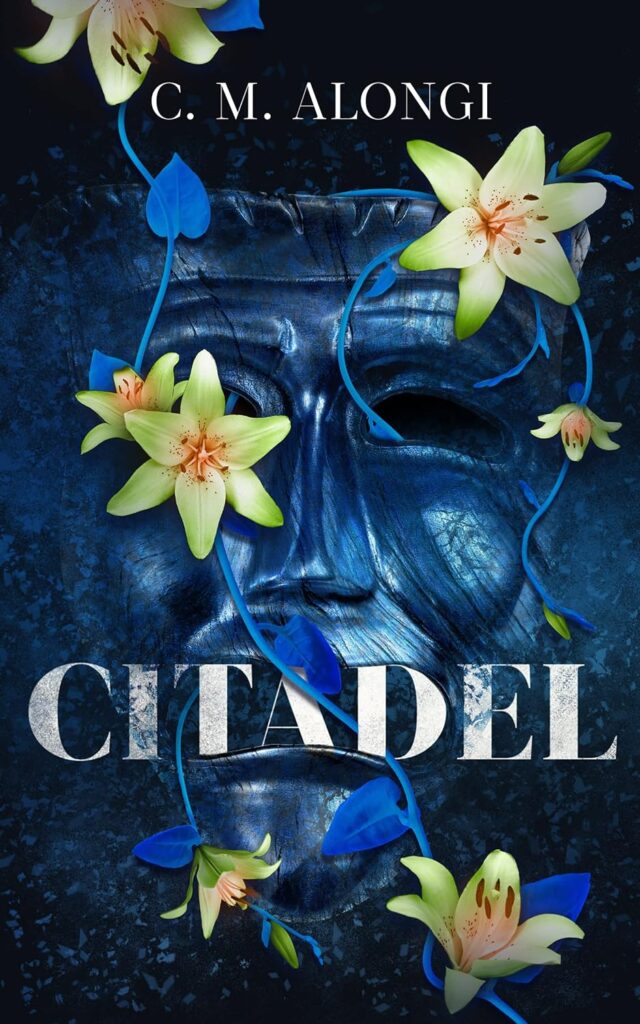
Citadel is the “first full-length novel” written by C. M. Alongi, whose publisher apparently doesn’t count her earlier fantasy novella series. (The publisher also doesn’t mention her very popular YouTube channel.) The book reminds me of some of Sharon Shinn’s works, where a story that seems initially to be fantasy turns into science fiction as the plot is revealed.
The protagonist is a young woman named Olivia who lives in an isolated city called Citadel, walled against extreme tidal flooding and incursions by a hostile species known as “demons.” She is somewhere around nineteen years old, but seems older since she is mourning her fiancee, killed a year ago in a battle against the demons. She has not been diagnosed with autism, since the diagnosis is unknown in Citadel, but she has many signs of it, along with a discomfort with communicating verbally. She is never without her notebook in which she answers conversation, makes copious notes on natural history, and writes eloquent letters to her dead fiancee.
However, Citadel is becoming a dangerous place to live, particularly for anyone who is in any way different. People who disagree with the current government, which has established a religion around exterminating the demons, are being put to death. It is a very bad time for a young woman, already harassed for her differences, to learn that said demons are sentient. Leaving the city and living in the hostile environment around it might actually be less dangerous for Olivia than remaining at home.
This is a fine SF read, with interesting world-building and a modern female protagonist whose confidence is unburdened by her repressive upbringing and is well up to the adventures ahead of her.
Two Books by T. Kingfisher
Ursula Vernon (aka T. Kingfisher) will soon be returning to Minneapolis to be the Author Guest of Honor at Minicon, and we’ve made an effort to acquire some of her backlist. I have for some time been hearing great things about Swordheart and the Paladin series, which begins with Paladin’s Grace. Initially, I had to borrow them from a friend, who obviously treasures them. But now we have some copies in stock!

Swordheart is the story of a “respectable middle-aged widow” who does not expect much from life, and so is not prepared to fight for her inheritance or position. This changes, a little, when a battle-scarred and dishonored man emerges from an ancient sword that has become hers. With the help of a priest of the Rat God, who is a lawyer—because the Rat God’s priests believe that legal aid is the best way to help people—both widow and warrior find the courage to simply seek happiness.

Paladin’s Grace takes place in the same world but does not overlap much, so can easily be read as a stand-alone. The death of the Saint of Steel has left His holy-berserker Paladins abandoned and bereft. Those who didn’t die or succumb to battle madness have made a new but empty life as servants of the Rat God. Their leader takes a small step toward redemption while defending a perfumer named Grace who is mistakenly caught in an assassination attempt against a foreign prince. Again, both perfumer and Paladin make the big step to allow themselves to seek happiness.
Both books are gently funny and bittersweet at the same time. They are both sort-of romances and are surprisingly thrilling, despite their older, world-weary protagonists. It seems that the battle to stand up for yourself or defend someone else from a small wrong, requires its own form of heroism. There is redemption and grace to be found in simple courageous acts.
The Atlas Six by Olivie Blake
A New York Times Bestselling book from 2022 does not really need a review from me. But the sequel just came out, and a customer recommended it to me. They were right. The Atlas Six is a treasure trove of beautiful writing, interesting characters, and odd wisdom.

Six young people, all accomplished medeians (magicians), are recruited by a mysterious man named Atlas Blake, for an unexpected and unusual opportunity. They end up secluded together in the Library of Alexandria, which has attained a sort of sentience and is now located somewhere in England. There, they research whatever philosophy, science and magic the Library will permit them.
The idea of an ancient and vaguely dangerous knowledge is not new, nor is the existence of a hidden magical library. The magical system invented by Olivie Blake, a merging of philosophy and science, is confusing enough that I did not really try to understand it. That said, much of the magical philosophy is actually basic psychology based on common sense and observation, and is extremely well done. The musing on the nature of villainy and heroism that starts on page 299, for example, is almost worth the price of the book.
But it is the characters—the six people chosen by Atlas, Atlas’ assistant, and Atlas himself—that are the core of the book. Every one of them is deeply flawed and holding powerful secrets, which they are hiding from the others, the reader and, sometimes, themselves. The relationships between all eight of them are fully realized and often wrenching. None of them are particularly likable, but they are so brilliantly understood within the story that you come to care for them all. This renders the trap that is closing around the chosen Six particularly poignant and riveting.
The Atlas Six covers the discovery and training of the Library’s newest students. It becomes clear that the trap closing on the students is part of a larger problem. The exact nature of the disaster that might be looming over Atlas and/or the Library remains to be seen in the second book, The Atlas Paradox. Both books are now available in trade paperback.
The Road to Roswell by Connie Willis

Connie Willis is a master storyteller with numerous Hugo and Nebula Awards under her belt. She excels at brilliant, frantic science fiction stories that manage to be closely personal and engaging, while somehow still ending up as world-saving adventures.
Francie is a typical Connie Willis heroine. She is ordinary, smart and well-meaning, with a huge measure of sardonic practicality, just like her author. She arrives at her best friend’s wedding during a festival at the UFO Museum in Roswell, New Mexico. Her goal is to stop her best friend from once again making a bad marriage decision. She ends up being abducted by an alien while wearing a neon-green, glow-in-the-dark bridesmaid’s dress. It’s not her fault. Really. Francie is the only person in the book who is exactly what she seems.
The abduction quickly goes astray, turning into a chaotic and hilarious road trip, as the alien (literally) ropes in more people, each more eclectic and unexpected. Many of them are obviously well-versed in the lore surrounding UFOs and abductions, though Willis of course turns their information completely sideways. The growing group has to evade UFO nuts and tourists and traffic cops and Men in Black and (maybe) other aliens. They are never entirely sure what they are doing. Or exactly why.
In the end, though, on The Road to Roswell, knowing everything about science fictional UFO tropes is not as nearly as useful as kindness and a full working knowledge of 1950s cowboy movies. They’re a great way to learn to communicate, you see, and the alien has a thing for Monument Valley . . . It’s best to just run with it. The book is tons of fun—Connie Willis at her best.
Shanghai Immortal by A.Y. Chao
I chose this book because it has a really cool cover. And also because I’m currently having a blast with fantasy based on Chinese mythology. I kept reading it because the world-building is wonderfully inventive and exuberantly Chinese. And the main character, who tells her story in first-person present tense, is a fabulous narrator.

Shanghai Immortal takes place in “jazz age Shanghai” and its underworld reflection, immortal Shanghai, which is basically a version of Chinese Hell. Immortal Shanghai is where the dead work through their attachments before drinking Meng Po’s soup of forgetfulness and passing over the Naihe Bridge to reincarnation. It is ruled by the yaojing immortals—gods, demons, hopping vampires, hulijing (nine-tailed foxes)—and one Big Wang, the King of Hell. Both Shanghais are loud, irreverent, and perilous.
Our heroine narrator, Lady Jing of Mount Kunlun (called Little Jing), is equally loud and irreverent, though possibly not as perilous as Shanghai. Possibly. She is half vampire and half hulijing, and at not quite one hundred years old, she is still an obnoxious teenager. She has severe anger management issues, particularly when dealing with her boss, Big Wang, or her hulijing grandmother, the Venerable Matriarch of the Hulijing Court. She also needs both blood and the yang energy from mortals to survive.
So when Big Wang sends Little Jing to the edge of Hell to meet a living mortal, a rather handsome banker named Tony Lee, there is bound to be trouble. And there is. On top of his danger from Lady Jing’s appetites, Tony Lee is key in a plot to open the Bank of Hell, a modernization which the Hulijing Court vehemently opposes. In the endless disputes in Hell, no one, whether yaojing or mortal, is safe. Plus, Little Jing kinda likes him. Maybe a lot.
The Sentence by Louise Erdrich

I am not usually a fan of magical realism. I prefer magic that operates under an ordered system invented by the author, and is undeniably real in the pages of a book. The dreamy, this-may-not-really-be-happening attitude behind magical realism often seems to me contrived or unnecessary. But The Sentence describes events that I lived through here in Minneapolis—the beginning of the pandemic and murder of George Floyd—in that same dreamy, surreal style. It actually felt just like that.
The book is a first-person narrative by a woman named Tookie, a Native American who has not always made, shall we say, the best life choices. But Tookie learned, in prison, “to read with a force that resembled insanity,” which allowed her to get most of her shit together. In 2020, she is working at Birchbark Books in Minneapolis. It’s a real place. Louise Erdrich owns Birchbark Books, and oddly appears as a minor character in her own story.
The bookstore, or more specifically Tookie herself, is being haunted by the ghost of an elderly and irritating customer. Narrated in the same surreal tones, the events of 2020 Minneapolis become similarly haunted and unreal. I remember being in those liminal times, both more and less effected than Tookie and her friends. DreamHaven Books and Uncle Hugos (both mentioned in The Sentence) were much closer to danger than Birchbark Books, but we do not share the heritage of oppression. The book is a reminder of the unexpectedness, uncertainty and, yes, magic of that awakening year.
Winter’s Gifts by Ben Aaronovitch
A new book in Ben Aaronovitch’s Rivers of London series has just arrived from Subterranean Press. And the story takes place in between Bayfield and the Red Cliffs Reservation, in Wisconsin!

The bad news is that Peter Grant, constable and magician—sorry, practitioner—for the London Metropolitan Police, is only peripherally involved. The good news is that the FBI has its own department for investigating cases with “Unusual Characteristics,” and no prior knowledge of London’s supernatural troubles is required for the new reader.
FBI Agent Kimberley Reynolds has appeared in some previous Rivers of London books. She is, perhaps, not so well-trained in magic, but she’s as snarky as Peter Grant and possibly smarter. She grew up, we learn, in a small Bible Belt town. She doesn’t approve of cursing because it’s “unnecessary,” but she’s open-minded and fair. I fell in love with her when she tells us that her Mama “is not a fan of the federal government, although she makes an exception for the military, the post office and, more recently, Medicare,” which I think sums up the American Wild MidWest nicely.
Kimberley has never been to Wisconsin before, particularly not in a harsh winter which is being made far worse by supernatural storms (or maybe global warming). I’m not sure that Ben Aaronovitch has been in a severe Northern winter either, but his descriptions seemed spot-on to me, though not quite as funny as his usual snide descriptions of London architecture.
The plot is, of course, a mystery involving magic, fast-paced and with plenty of action. The addition of historical speculation about the clash between Native American magic and imperialistic European magicians makes the story more relevant without diminishing the fun. A great read for a snowy Minnesota evening. Have hot chocolate standing by.
Liberty’s Daughter by Naomi Kritzer
Local author Naomi Kritzer’s new book, Liberty’s Daughter, has arrived! She will be doing a reading and signing at DreamHaven on Wednesday, December 6th.

Naomi is a multiple award winner, including Hugo, Lodestar, Edgar and Locus Awards. Her two most recent books, Catfishing on Catnet and Chaos on Catnet, feature young adult protagonists learning very adult things about the world. Like Cory Doctorow’s Little Brother, Naomi’s books give young (and older) readers new perspectives on current events.
Sixteen-year-old Beck Garrison has grown up on Min (short for New Minerva), one of a conglomerate of Pacific ocean platforms that compromise a loosely-organized and largely unrecognized group of nation states. Her childhood has been rather sheltered, since her father is a very important man. She is about to find out that things are not as utopian as they seem, and that her father, perhaps, cannot be trusted.
The politics of Min and the other attached platforms are complex and nuanced, and part of the novel is Beck’s discovery of the ways in which various forms of libertarian government, including total anarchy, might work. However Beck finds out, through her new part-time job, that many parts of her society are not actually working very well for many of the people she meets. And then the real crises hit . . .
Beck is a great character. She is a little bit snarky and a lot smart. Her naivety quickly gives way under the strength of her observations, revealing an unexpected ability to see all the parts of a problem and find ways to fix it. Like many teen protagonists, she sometimes has to overcome adults who are standing in the way. Beck’s journey to find agency, despite the adults trying to take it away, is one of the joys of the novel.
Newsletter
We have a newsletter! Have you seen it?
We aren’t doing a catalog any longer but we are now sending out a newsletter via e-mail every two weeks. New titles, events, used and collectible titles, sales, whatever is going on, we’ll let you know. The next one goes out on October 27th. If you’re interested, just pop your e-mail in the spot here and we’ll get you on the list.
City of Last Chances by Adrian Tchaikovsky
I’ve been hearing good things about British writer Adrian Tchaikovsky (Czajkowski) for some time. He is the author of several acclaimed epic series, including the ten-book Shadows of the Apt and three-book Children of Time. City of Last Chances is his most recent book and, so far, a stand-alone fantasy novel. I suspect there will be sequels.

The ancient city of Ilmar stands at a dangerous crossroads between magical worlds, and has many names, mostly uncomplimentary. The most recent in its long history of misfortunes is the replacement of a corrupt monarchy by an equally corrupt invader, a bureaucracy intent on forcibly Perfecting the citizenry. Neither the citizens of Ilmar nor its more arcane inhabitants appreciate this effort. Now various factions harboring a hodgepodge of more-or-less effective and misunderstood magics, are on the brink of rebellion.
The story is a politically and magically complex tale, told with seamless transitions between multiple points of view. The characters are all deeply flawed and occasionally unlikable, but they are fully human (mostly) and understandable. No one is particularly good, but no one is particularly evil either. They’re all just trying to get by in a city where perilous magic has been ignored for centuries and lots of wrongs are too entrenched to be changed.
The result feels like a cross between Les Miserables and Game of Thrones, with communism instead of an aristocracy, and written by Dostoevsky. The story is realistic and a bit violent, leaning toward horror but never quite getting there. Every description is laid like a building block in an intricate series of events. It is evocative, fast-paced, and surprisingly wise.
